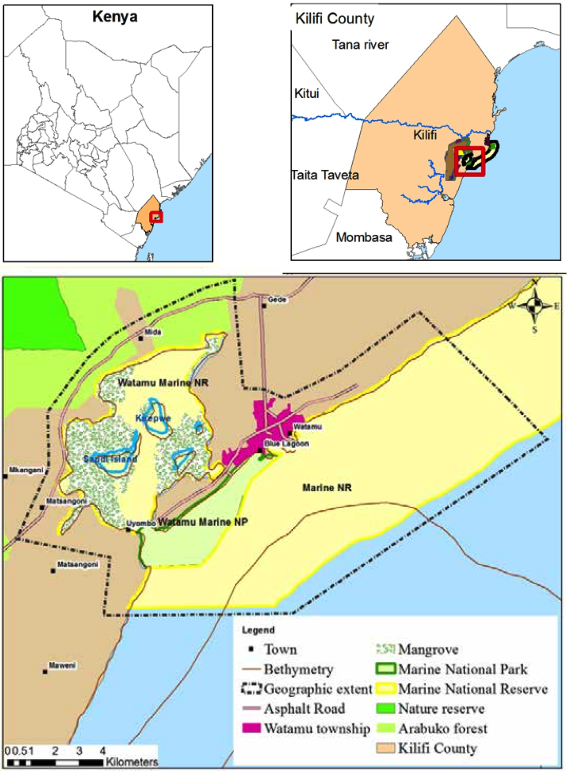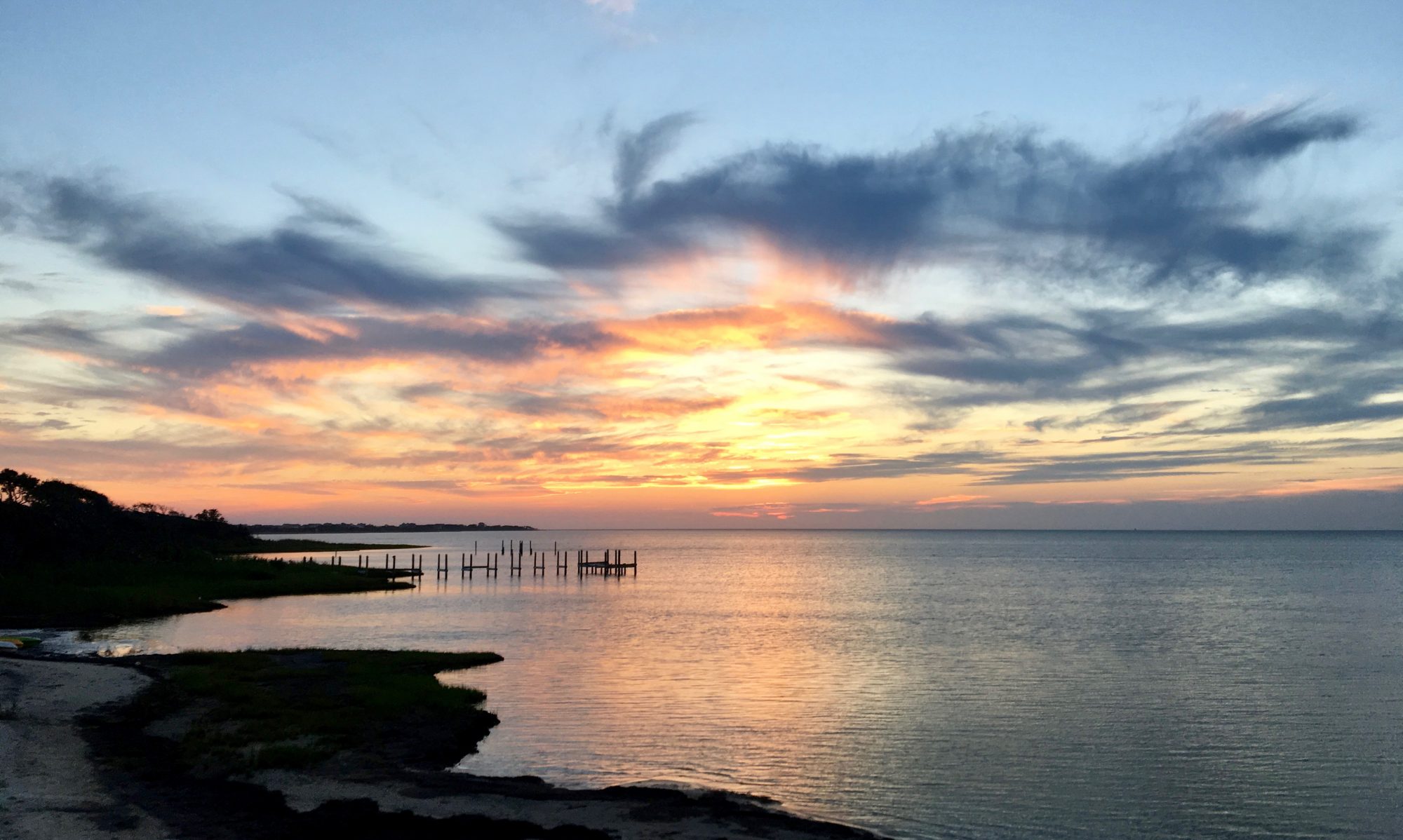By Ellis Kalaidjian
A comprehensive approach to sustainable development considers social impacts in environmental management and policy decisions. In practice, this requires decision-makers to have a nuanced understanding of how the services afforded by natural environments contribute to the livelihoods and well-being (generally understood as a measure of quality of life) of individuals and communities adjacent to them. The relationships between communities and their surrounding environments are dynamic and often place-specific. This month’s edition of the Coastal News from the Field series features a timely study by researchers from the University of St. Andrews, who explore the livelihood and well-being impacts of the Watamu Marine National Park and Reserve, a marine protected area (MPA) in Kenya, on nearby communities. The article was recently published in Coastal Management.
Watamu Marine National Park and Reserve (WMNPR) was designated as a protected area in 1968 and as a UNESCO biosphere reserve in 1979. The MPA comprises over 40 km2 of coral reef, seagrass, mangrove, and sandflat habitats. Nearby villages are supported by key ecological and economic services provided by this habitat complex. The MPA’s offshore reefs provide coastal protection and, along with the mangrove and seagrass habitats, serve as important spawning ground habitat for fish species. Various livelihoods, including fishing, tourism-based activities, fuelwood harvesting and beekeeping, are also supported by the MPA. Yet, land-use changes and other anthropogenic stressors have degraded the ecosystems upon which the coastal Kenyan region heavily relies.

The research team investigated how the presence of the WMNPR has impacted the livelihoods of those in proximity to it and, in turn, three dimensions—material, relational, and subjective—of such individuals’ well-being. Researchers surveyed 308 inhabitants of two towns, Uyombo and Mida, that differed socio-demographically and in their geographic proximities to the MPA. Uyombo is closer to the MPA than Mida yet is more removed from the economic activities and tourism associated with it. Through various statistical analyses of survey responses, the study offered several key findings:
- As anticipated, primary livelihoods differed significantly by town; owning a small business (selling clothes, fruit, etc.) was the most frequently reported livelihood in Uyombo, whereas crop farming was most engaged in by respondents from Mida. Yet, differences in levels of dependence on the WMNPR between the two villages could not be confirmed.
- Two key benefits were cited most often by survey respondents: (1) the MPA has contributed to improvements in their health, and (2) the MPA has allowed them to enjoy a healthy coastal ecosystem. By contrast, the most often reported disbenefits of the MPA were a decrease in natural resource management participation, as well as increased conflict and social tension.
- The benefits and disbenefits reported captured all three dimensions of well-being.
The authors conclude that their findings have significant implications for both research and the management of the WMNPR. The direct influence of WMNPR on the livelihoods of residents in Uyombo and Mida may be smaller than previously believed. For researchers, this suggests that trades such as fishing, which are overstudied in investigations of the communities that are impacted by MPAs, should be considered more evenly alongside others to ensure that vulnerable demographics are not overlooked. The finding that respondents were often dissatisfied with their decreased participation in the management of the areas comprising the WMNPR suggests that its governance needs to further promote bottom-up approaches that will comprehensively address the identified disbenefits. Moving forward, continued research about the dynamics of communities’ relationships with MPAs will help further inform management that adequately weighs well-being considerations.
Citation: Harker, A. L., Stojanovic, T. A., Majalia, A. M., Jackson, C., Baya, S., & Tsiganyiu, K. D. (2022). Relationships between Livelihoods, Well-Being, and Marine Protected Areas: Evidence from a Community Survey, Watamu Marine National Park and Reserve, Kenya. Coastal Management, 1-24. DOI: 10.1080/08920753.2022.2126266
Disclaimer: This post does not serve as an endorsement of the author’s opinion, nor does it express the views of the Coastal Society.

